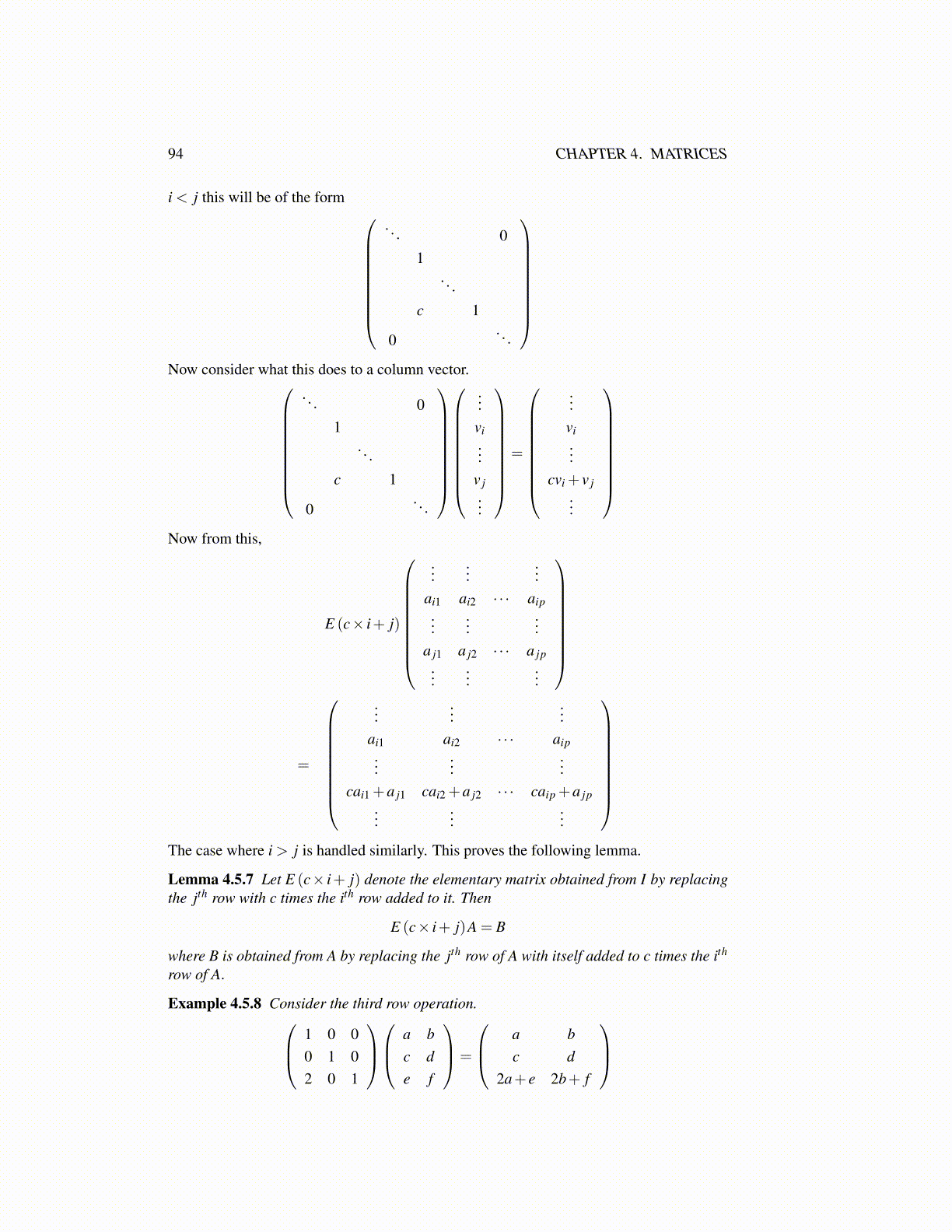
94 CHAPTER 4. MATRICES
i < j this will be of the form
. . . 01
. . .
c 1
0. . .
Now consider what this does to a column vector.
. . . 01
. . .
c 1
0. . .
...vi...
v j...
=
...vi...
cvi + v j...
Now from this,
E (c× i+ j)
......
...ai1 ai2 · · · aip...
......
a j1 a j2 · · · a jp...
......
=
......
...ai1 ai2 · · · aip...
......
cai1 +a j1 cai2 +a j2 · · · caip +a jp...
......
The case where i > j is handled similarly. This proves the following lemma.
Lemma 4.5.7 Let E (c× i+ j) denote the elementary matrix obtained from I by replacingthe jth row with c times the ith row added to it. Then
E (c× i+ j)A = B
where B is obtained from A by replacing the jth row of A with itself added to c times the ith
row of A.
Example 4.5.8 Consider the third row operation. 1 0 00 1 02 0 1
a b
c de f
=
a bc d
2a+ e 2b+ f